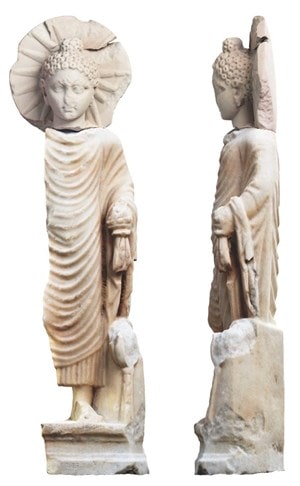Archaeologists excavating the ancient Egyptian port of Berenice Troglodytica unearthed a 2nd-century AD statue of the Buddha. This bustling Roman-era trade hub, located on the Red Sea’s western shore, has long yielded treasures reflecting its diverse commercial connections. However, a Buddhist icon stands out as a unique artifact within this historical context.
Berenice Troglodytica, founded by Ptolemy II Philadelphus (285-246 BC), thrived as a key waypoint during the Roman era (1st-2nd centuries AD). Here, traders from India, Sri Lanka, Arabia, and Upper Egypt exchanged exotic goods like pepper, precious stones, fabrics, and ivory, including the prized war elephants.
The American-Polish archaeological mission, overseen by Egypt’s Supreme Council of Antiquities since 1994, unearthed the 71-centimeter statuette. This robed Buddha figure, missing its right limbs, stands serenely with a halo radiating sunlight around its head.
Intriguingly, Dr. Marius Goyazda suggests the statue’s stone might originate from a region south of Istanbul. This hints at the possibility of Indian traders commissioning the statue locally and dedicating it at a nearby temple within the port city.
The discovery sheds light on the extensive trade network of the Roman Empire, with Egypt acting as a central hub connecting it to various corners of the ancient world. “Ships arrived from India, loaded with spices, jewellery, textiles and ivory,” explains Mostafa Waziri, head of the Supreme Council of Antiquities.
Dr. Stephen Sidbotham, leading the American team, revealed another exciting find – a Hindi (Sanskrit) inscription dating back to the reign of Roman Emperor Philip the Arab (244-249 AD). However, the inscription seems chronologically disjointed from the much older Buddha statue and the earlier Greek inscriptions (1st century BC) found within the same temple complex.
This captivating discovery compels further investigation into Berenice Troglodytica’s vibrant past. The unearthed Buddha statue serves as a tangible reminder of the far-reaching trade connections that knitted together the ancient world.
